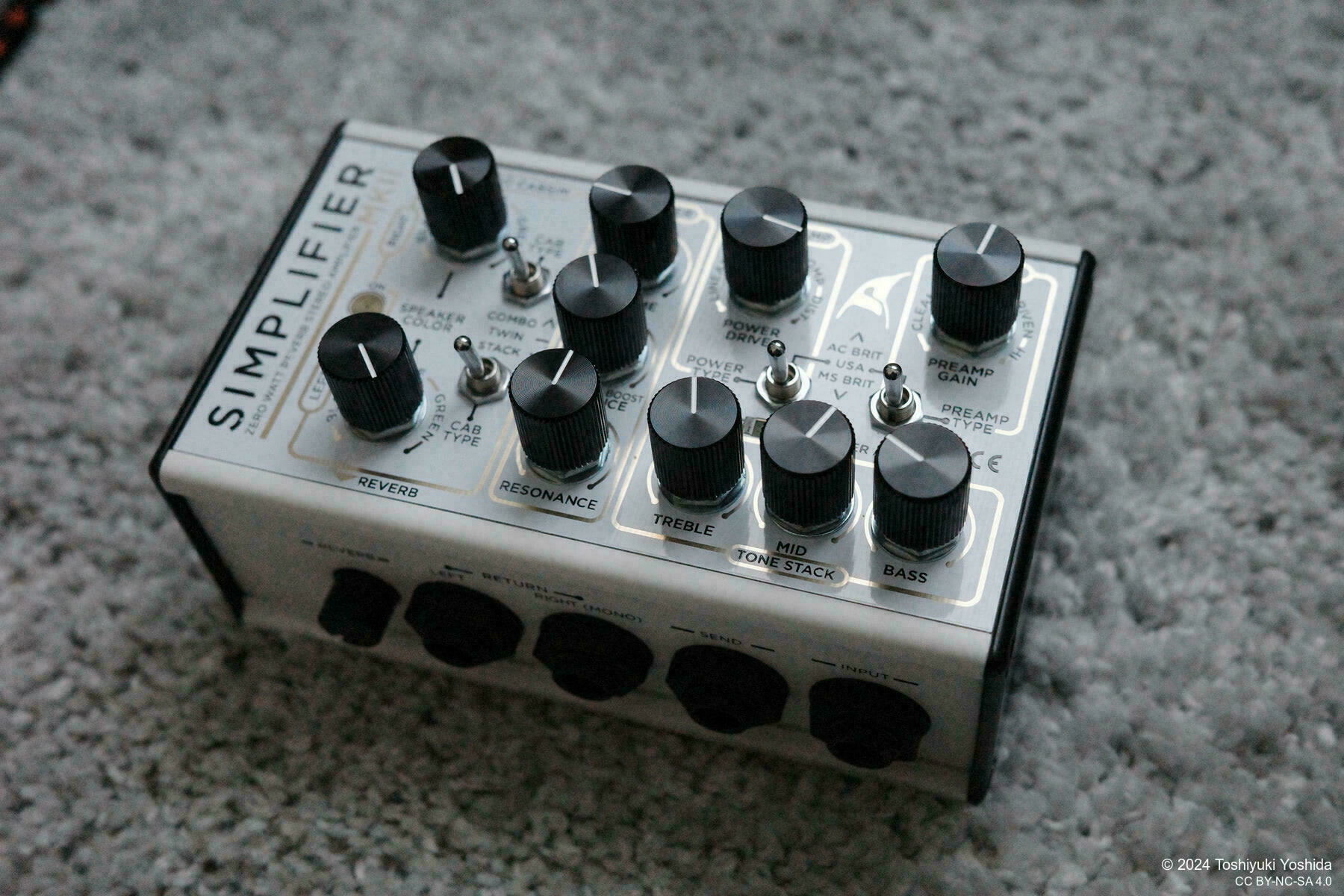Analog Amp Simulator - SIMPLIFIER MK-II

I had no major complaints about the Strymon Iridium I had been using for a long time, but I was drawn to the word “analog” and ended up purchasing the DSM & Humboldt Simplifier MK-II.
Zero-Watt Amp
The Simplifier MK-II is an amp simulator handmade by the Chilean manufacturer DSM & Humboldt, using primarily analog circuits. It is marketed as a “zero-watt amp,” condensing amp functionality into a compact enclosure.
Most amp simulators are divided into an amp section and an IR (impulse response) section, but the Simplifier MK-II mimics an actual amp by separating Preamp and Power Amp, allowing users to switch between Vox, Fender, and Marshall types for each.
A 3-band equalizer adjusts the tone, while the master section controls overall volume, mid-high frequencies, and low frequencies.
Finally, you can select a cabinet type from Combo, Twin, or Stack, and fine-tune the speaker characteristics using a dial with settings for BLACK (Fender), BLUE (Vox), and GREEN (Marshall).
All of these features are built using analog circuitry.
Additionally, it includes a high-quality digital reverb.
Impressions of the Simplifier MK-II
I’ve only used it briefly, but here are my initial impressions of the Simplifier MK-II.
Since you can adjust the gain separately on the Preamp and Power Amp, it allows for fine-tuned control over drive sounds. The gain range is also broad, making it possible to create a variety of distortion tones with just this unit.
Personally, I prefer to increase the Power Amp level as much as possible and adjust the distortion with the Preamp as needed. However, I did notice some noise, so I plan to use a distortion pedal as a booster in front. The response to boosting is amp-like and easy to understand.
Additionally, since all controls are analog, it is intuitive and easy to quickly dial in the desired sound.
The unit features a SEND/RETURN (effects loop), so I have connected my Strymon El Capistan II, using its delay and reverb instead of the built-in reverb.
Furthermore, the DI OUTPUT allows direct XLR connection to my MOTU M2, making it very convenient for recording with Logic Pro.
Drawbacks
I found three drawbacks:
- Settings cannot be saved, requiring manual knob adjustments each time (MIDI-based setting changes are also not possible). This is the trade-off of using analog circuitry.
- Turning up the gain introduces some noise.
- Due to the compact design accommodating multiple interfaces, jacks can interfere with each other when connecting cables. In particular, the reverb adjustment knob is located on the side, making it difficult to use when mounted on a pedalboard.
Conclusion
The Simplifier MK-II is an amp simulator that offers the response and feel of analog operation, which sets it apart from digital simulators. The separation of preamp and power amp allows for precise gain adjustments, making it possible to create highly realistic amp-like tones.
Jack placement requires some thought when integrating it into a board. I will take some time to figure out a good setup. Since I primarily use it at home, this is not a major concern for me, but for live use, the lack of digital control and connectivity might require some creative solutions.
Even so, its simple operation and dynamic analog response make it a strong candidate for the centerpiece of my pedalboard. I will continue using it and provide a more detailed review in the future.